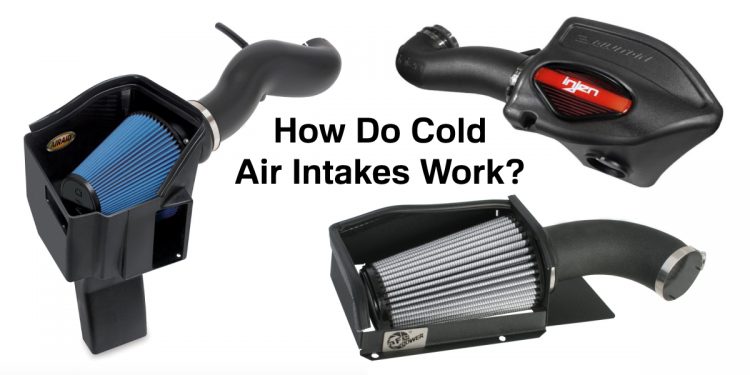The automotive aftermarket is home to a virtually endless array of parts and upgrades that can take your vehicle to the next level. In the on-going quest to make our cars more powerful and fun, it may be difficult to choose a place to start and know which products are best. For instance, there is a plethora of exhaust systems, turbos, superchargers, intakes, a number of other bolt-on components that can greatly enhance your performance.
Cold air intakes are one of the most popular first mods that car enthusiasts install on their cars. It’s also one of the most universally recommended upgrades out there. This simple modification can noticeably improve the sound and performance of your vehicle; it’s also more affordable than most other performance products.
Replacing your car’s stock and restrictive air intake system will bring in newfound power and several other benefits too. In this post, we are going to delve into everything you need to know about cold air intake systems, how they work, and what they can do for your car.
What Do Cold Air Intakes Do?
Your vehicle’s factory intake pulls in air from the engine bay which, for obvious reasons, gets hot quickly. Cold air intakes, on the other hand, move the air filter outside of the engine compartment so cooler air is pulled into the combustion chamber.
Typically, the filters are moved to a location where there is more access to free-flowing cool air, such as the upper wheel well area or near a fender. We all know that cool air is more oxygen-dense than hot air; this, in turn, creates more powerful reactions in your engine that translate to more power. Think of a cold air intake as a really good “cold” medicine that finally lets your engine breathe more freely.
In addition to reducing air temperature, cold air intakes also increase airflow. Aftermarket intake systems remove the need for the air filter to have a box surrounding it; instead, companies use large-diameter intake tubes that are smoother and have fewer bends than the factory tubes. By removing the airbox and using a more strategically designed tube, the cold air intake system delivers more uninterrupted airflow to the car’s engine.
Cold Air Intakes and Filters
Aftermarket cold air intakes use a number of different techniques in order to reduce the temperature of the air that is sucked in. Many of them are crafted from low-heat conducive materials or use a heat shield. Oftentimes, the intake tubes are also less restrictive than the stock ones. Even the air filter being used is an upgrade over the standard paper filter.
Paper filters are thicker and the fibers are usually denser to meet minimum filtration standards. While they may catch more dust, they get dirty and clogged quicker and need to be replaced generally every 10,000 miles. Otherwise, they can decrease your engine’s performance due to the build-up of debris.
Cold air intakes usually come with a higher-quality filter (i.e. cotton air filters) that are less restrictive and allow for better airflow. With these, you can simply wash your air intake filter instead of having to always purchase a new one. It is important to note that cleaning interval times depend upon your driving conditions. It’s recommended that you inspect the filter every so often just to be safe. They generally should be cleaned every 25,000 to 50,000 miles. Many cold air intakes on the aftermarket have clear windows for easy inspection to make checking your filter more convenient.
The Benefits of Cold Air Intakes
Cold air intake systems deliver a wide range of benefits for your car’s engine for a price that won’t break the bank.
- Increased Fuel Efficiency: By providing an optimum air-fuel ratio, your car’s engine will receive a sufficient amount of oxygen and will not need to burn more fuel to overcompensate.
- Better Acceleration: When a cold air intake is installed, you may experience a surge in acceleration when you step on the gas pedal. This is because the vehicle is inhaling a larger amount of oxygen and therefore reaching the intended speed more rapidly.
- Save Money on Filters: What’s more, the filters in CAIs will only need to be cleaned, rather than repurchased, and last double the time of the stock paper ones. Instead of tossing your air filter every 15,000 miles, just wash it with some soap and water about every 30,000 miles.
- Additional Power Gains: While a CAI may not deliver as impressive gains as, let’s say, a full exhaust system, it does deliver some added ponies. Depending on your vehicle, a cold air intake can add anywhere between 5 and 20 horsepower to your ride. It just goes to show how the simple process of redirecting airflow and reducing temperature makes for some decent gains.
- Improved Engine Sound: The bottom line is that with more air comes a more aggressive-sounding engine. If you revel in the sound of an engine roaring, you’ll be pleased to know that installing a cold air intake results in a nice throaty growl that is sure to satisfy.
Will a Cold Air Intake Void Your Warranty?
It is very important to familiarize yourself with your car’s warranty information. That being said, it is also important to understand the Magnuson-Moss Warranty Act of 1975. This law states that if an aftermarket part is not related to the repair (i.e. did not cause the damage), then the warranty remains in effect.
So, if you install a cold air intake on a car that later experiences a faulty transmission, the repair would still fall under the warranty. This is because there is no way that the upgraded CAI system caused damage to the transmission. Even so, there can be instances where you could be denied coverage under your car’s warranty. For instance, if the cold air intake was improperly installed and caused the engine to experience air deprivation, the warranty might be voided. You can avoid warranty issues by simply servicing your vehicle at the proper intervals and keep all of the records and receipts.
Can You Perform the Install Yourself?
The installation process for cold air intakes is fairly simple and straightforward. The install can be done in the comfort of your very own garage or driveway using some basic hand tools and general automotive know-how. The entire process is estimated to take around 30 minutes to complete. All you have to do it remove the stock air intake system and replace it with the components of the new system.
Before getting your hands dirty, you will want to establish whether your CAI is a tune or no-tune intake. While no-tune required CAIs are easier to install, adding a tune does improve the overall benefits and performance of your vehicle. Cold air intakes that require tunes tend to have bigger intake tubes. Since the computer in your vehicle is programmed from the factory to a certain diameter of the intake tube, you will need to find a way to communicate that such has changed.
Hence, a tune is required to properly complete the installation. While a cold air intake generally will not void your factory warranty, a tune is a more complicated and less warranty-friendly process.
Can a Cold Air Intake Damage Your Engine?
A cold air intake, when properly installed and maintained, will not damage your car’s engine. The fact that cold air intakes are so low risk is just another added bonus to the long list of benefits. If you purchase a CAI that requires tuning, it’s important to make sure that you tune it correctly. Installing a tune-required CAI without a tune could cause some serious engine issues.
If maintaining the factory warranty is of the utmost importance to you, you may want to consider purchasing a no-tune cold air intake. Once you have purchased and received the intake system that is right for you, simply follow the included instruction guide and you will be on your way in no time. Of course, there is never shame in asking for help or having a professional carry out the install, just to be extra safe.
Shop All Cold Air Intakes Here
Some of our popular intake brands:




